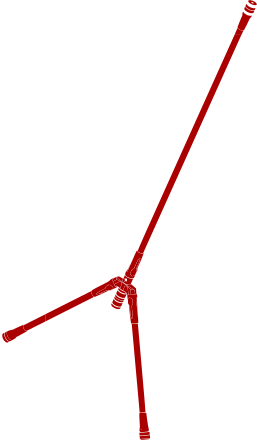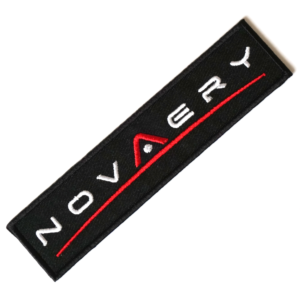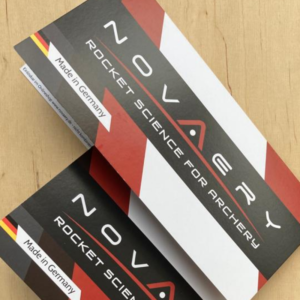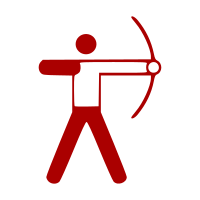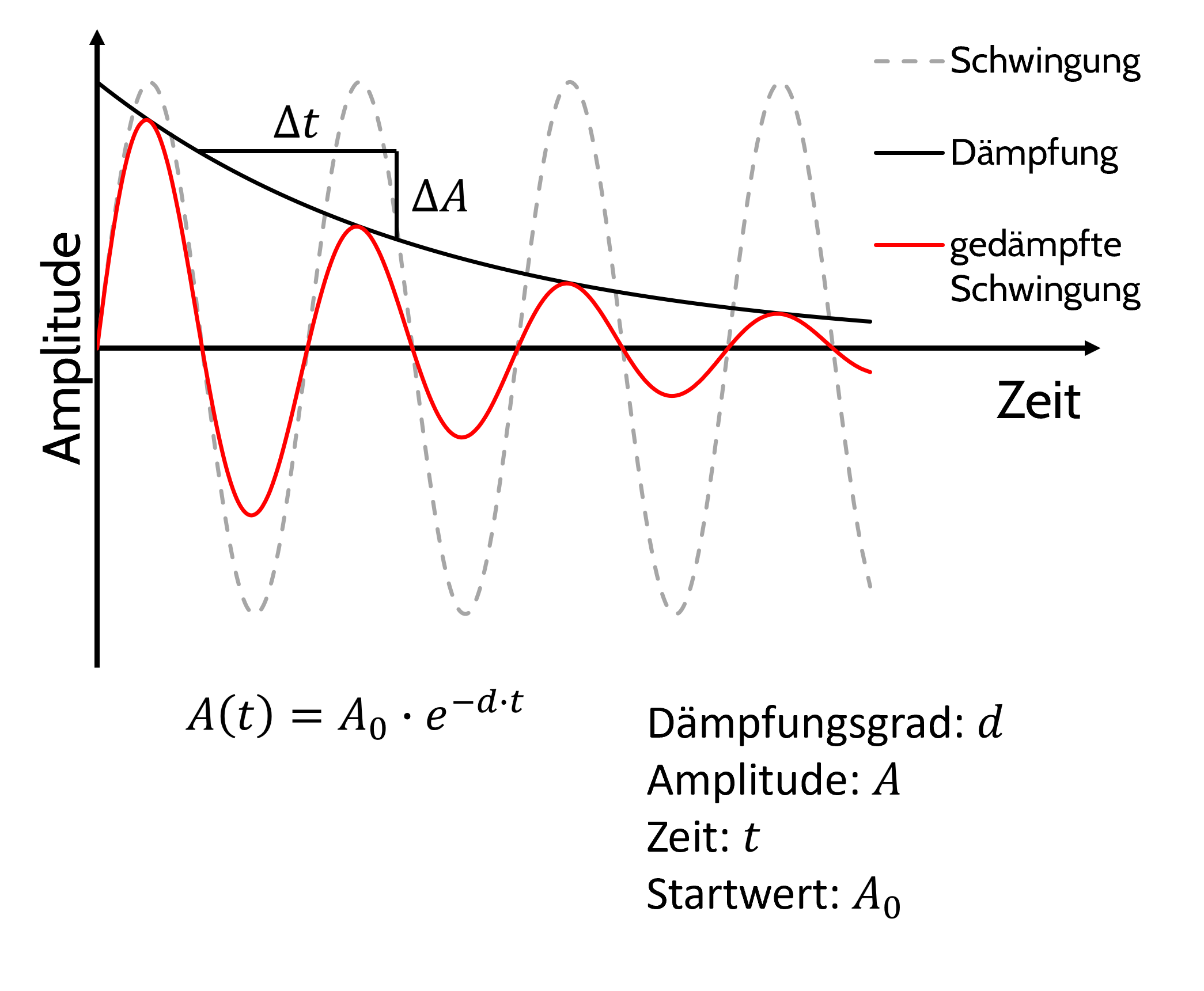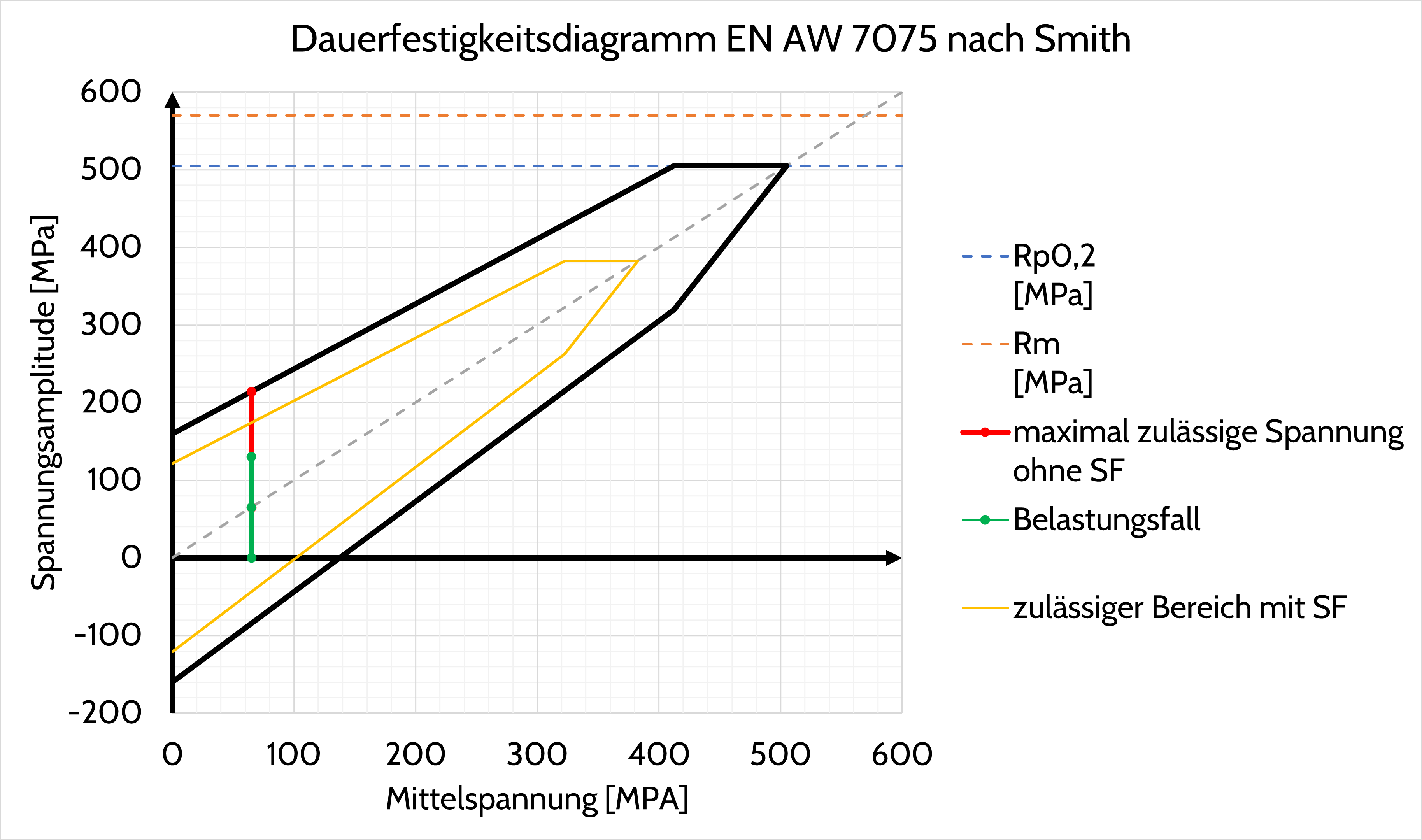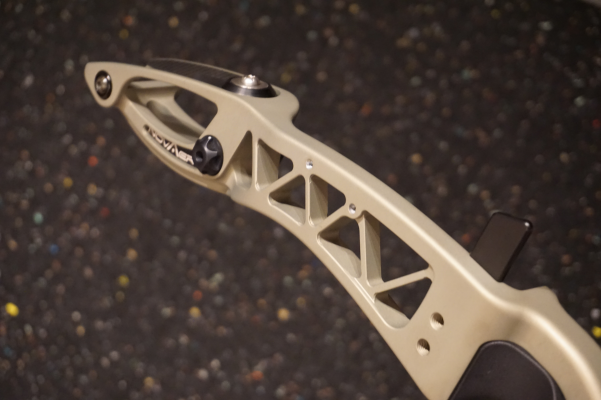Technical design requirements
The design process for space components follows a strict procedure. For an efficient process, concrete requirements for the component must be defined at the beginning, which are verified in various tests or simulations.
On this page you will find a comprehensive overview of the requirements that we have defined for our AESTUS and VEGA risers and which technologies are used to manufacture them.
Performance
P-01: As much energy as possible should be transferred to the arrow in order to achieve a high arrow speed.
P-02: The riser must behave exactly the same with every shot. Reproducibility and precision are paramount.
P-03: The straightness of the riser must be guaranteed.
Mechanical
M-01: The riser should reduce the noticeable shock to a minimum.
M-02: The riser should have a high damping capacity.
M-03: The mass of the riser should correspond to the commercial standard.
M-04: The riser should offer a particularly long lifetime without loss of quality under constant stress and the given environmental influences such as UV radiation, temperature fluctuations and rain.
Functional
F-01: The limbs must be able to be precisely aligned with a stepless adjustment option.
F-02: The surface must be of the highest quality in terms of look and feel.
F-03: The angle of attack of the limbs should be adjustable in an extended range in order to achieve a greater variance in tiller and draw weight.
Performance Requirements
requirement
comment
approach
solution implementation
P-01: | As much energy as possible should be transferred to the arrow in order to achieve a high arrow speed. |
When shooting, the potential energy of the drawn bow should be converted into the kinetic energy of the arrow in order to accelerate it. However, not all of the potential energy is transferred to the arrow. The efficiency describes the relationship between the kinetic energy of the arrow and the potential energy at full draw. A large number of parameters influence the efficiency. Simplified it can be assumed that 70-80% of the potential energy is transferred to the arrow. The remaining 20-30% remain in the bow as internal energy. This is noticeable, among other things, in the vibrations after the shot.
Most of the energy transferred to the bow is used to move the limbs. A certain part is also carried over to the riser. This energy is lost for the acceleration of the arrow as internal friction in the riser. In order to minimize this hysteresis, the riser must have a high level of rigidity. The lower the bending of the riser, the less energy is converted during the deformation.
Structural optimization for high rigidity
P-02: | The riser must behave exactly the same with every shot. Reproducibility and precision are paramount. |
Reproducibility plays an important role on two levels:
1: Everything must be positioned exactly the same for each assembly of the bow.
Clearance-free connections are provided between the limb and the riser on the dovetail and the tiller screw as well as between the components of the riser.
High fitting tolerances in the µm range, taking into account the thickness of the anodized layer.
2: When shooting, nothing must change/detach (shake loose, etc.) as a result of vibrations.
Appropriate securing techniques are used to prevent the screw connections from loosening due to vibrations.
Tiller screw and bolt are secured by an expanding lock screw. The primary lateral adjustment is self-locking due to the M6x0.5 thread. In addition, the two bolts of the FLAT system are secured by opposite counter-screws. Fixed thread inserts are glued to the center section.
The tension in the raw material is an important aspect for production. Internal stresses arise in every metallic raw material during production at the cooling process, because the surface of the raw material cools faster than the inside. These stresses can be reduced by suitable processes, but not completely eliminated. If a component is now milled from the raw part, around 90% of the material is removed in the case of the riser. The internal stresses, which were previously in equilibrium, then cause the component to deform.
However, the support points of the limbs must be made exactly parallel so that the bow is straight and the energy is transmitted straight into the arrow.
Specially stress-relieved 7075 aluminum from a renowned German manufacturer is used.
The riser is manufactured in several tensions. This means that the riser is re-clamped on the CNC machine several times between the production steps. After each production step, the internal stresses are already partially “discharging”. In this way, the deformation can be compensated for in the subsequent processing.
If, on the other hand, the riser is milled in one tension, the deformation only occurs after completion and can no longer be compensated.
The fitting bores for the limb bearings are milled in the last production step. To do this, the riser is completely re-clamped on the 5-axis CNC machine without any tension. This ensures that the contact points to the limb offer the greatest possible parallelism.
Due to the high accuracy of the limb contact points, there is no need for a torsion adjustment option in the limb mount without affecting the precision.
mechanical requirements
requirement
comment
approach
solution implementation
M-01: | The riser should reduce the noticeable shock to a minimum. |
Shock denotes the first peak in the bow’s response after release. This can be measured as acceleration with a gyroscope.
Applying force over a large area to the riser leads to a reduction in local stress peaks, which results in a more homogeneous stress distribution.
The force is transmitted between the individual components via generously dimensioned form locking connections instead of using threads or line contacts. This maximizes the effectively used area for force transmission.
M-02: | The riser should have a high damping capacity. |
The relevant natural frequencies must be above the vibration frequency of the bow multiplied by a factor of √2 in order to prevent natural vibration from being stimulated. The higher the stiffness, the higher the natural frequencies.
Vibrations can be dissipated as hysteresis through internal friction in the material or in the form of friction between components. So the riser itself already offers a certain amount of internal damping. In addition, the stabilizers and dampers serve to reduce vibration.
Structural optimization to achieve high rigidity and thus higher natural frequencies.
Allow slight friction between components to efficiently dissipate vibration.
M-03: | The mass of the riser should correspond to the commercial standard. |
Commercially available high-end riser have a mass of approx. 1300g ±50g. Basically, it is possible to construct an extremely light riser below 1000g and a riser that is as light as possible sounds like a good idea at first. However, a strong reduction in weight is always accompanied by a loss of flexural rigidity, which in turn reduces efficiency. In addition, the risk of structural failure increases, especially with high draw weights. Furthermore, athletes prefer bows with a higher mass, especially in the high-end sector. Moreover, low mass reduces natural frequencies, which manifest themselves as vibration during shooting.
Mass ≤ 1300g
Structural optimization for a homogeneous stress distribution, so that the highest possible stiffness is achieved under the given boundary conditions.
M-04: | The riser should offer a particularly long lifetime without loss of quality under constant stress and the given environmental influences such as UV radiation, temperature fluctuations and rain. |
With increasing use, the contact points between the limb and riser can become abrasive, causing repeatability to suffer.
With sustained stress, microcracks can form, which expand over time and can lead to structural failure. Frequent use can damage threads in soft aluminium. The surface coating, especially paint, is also affected over time.
The form locking connections between components reduce wear by transmitting power over effectively larger areas.
The surface is finished with a particularly durable hard anodized coating.
Frequently screwed threads are made of stainless steel.
The structure is designed for fatigue strength of> 10 5 load cycles. The safety factors according to the European space standard ECSS-E-ST-32-10C_Rev.2-Corr.1 (metallic parts, satellite) incl. an additional margin are applied.
Functional requirements
requirement
comment
approach
solution implementation
F-01: | The limbs must be able to be precisely aligned with a stepless adjustment option. |
The manufacturing tolerances of the limb manufacturers should be perfectly compensable. The groove for the tiller screw or the hole for the dovetail are often not exactly in the center, even though the limb is straight. If, on the other hand, the limb is already twisted, this cannot be compensated for by a static torsion correction in the riser, since the torsion of the limbs changes dynamically when drawing the bow. For this reason, this adjustment option is deliberately avoided and instead attention is paid to the greatest possible parallelism of the bearings.
The riser offer precise, stepless lateral adjustability of the limb mount on the tiller screw and the bearing.
F-02: | The surface must be of the highest quality, both visually and haptically. |
The quality and feel of the surface are the first things that athletes notice about a riser, even before the bow is shot. Milling marks such as chatter marks can be visible, which are caused when the milling tool starts to vibrate due to unsuitable process parameters. Surfaces polished by hand are usually never completely uniform and sandblasted surfaces can form a file-like surface structure after anodizing, to which dirt particles adhere. These are visible as a color difference and are difficult to remove, since polishing cloths or similar leave particles on the surface.
Milling marks are already minimized during production by optimizing the milling programs down to the last detail and finishing the surface very finely.
Before anodizing, the riser are blasted with a special granulate. The component then goes through an additional step in which the sharp micro-edges created by blasting are rounded. This reduces the adhesion of dirt particles and the result is a matt, satin-like surface.
The risers are coated with a high-quality hard anodizing process specially developed for 7075, which guarantees maximum durability with the greatest possible smoothness.
In addition, all edges are deburred with radii directly in the milling process, which leads to unsurpassed repeat accuracy.
F-03: | The angle of attack of the limbs should be adjustable in an extended range to allow a greater variance in the tiller and the draw weight. |
With conventional risers, the tiller range is limited by the angular error between the tiller screw and the limb. If the angle difference is too large, the power is no longer properly transmitted from the limb to the riser. The manufacturers indicate the limit position of the tiller screw via a permissible number of turns at which the angle error is just tolerable.
Thanks to the inclinable tiller screws, there is no angular error between the limb and the riser. This allows the limb to be adjusted over a larger range of inclination. This area is only limited by the length of the groove in the limb.
F.L.A.T. – Form Locking Alignment Technology
Up to 20% extended tiller range





